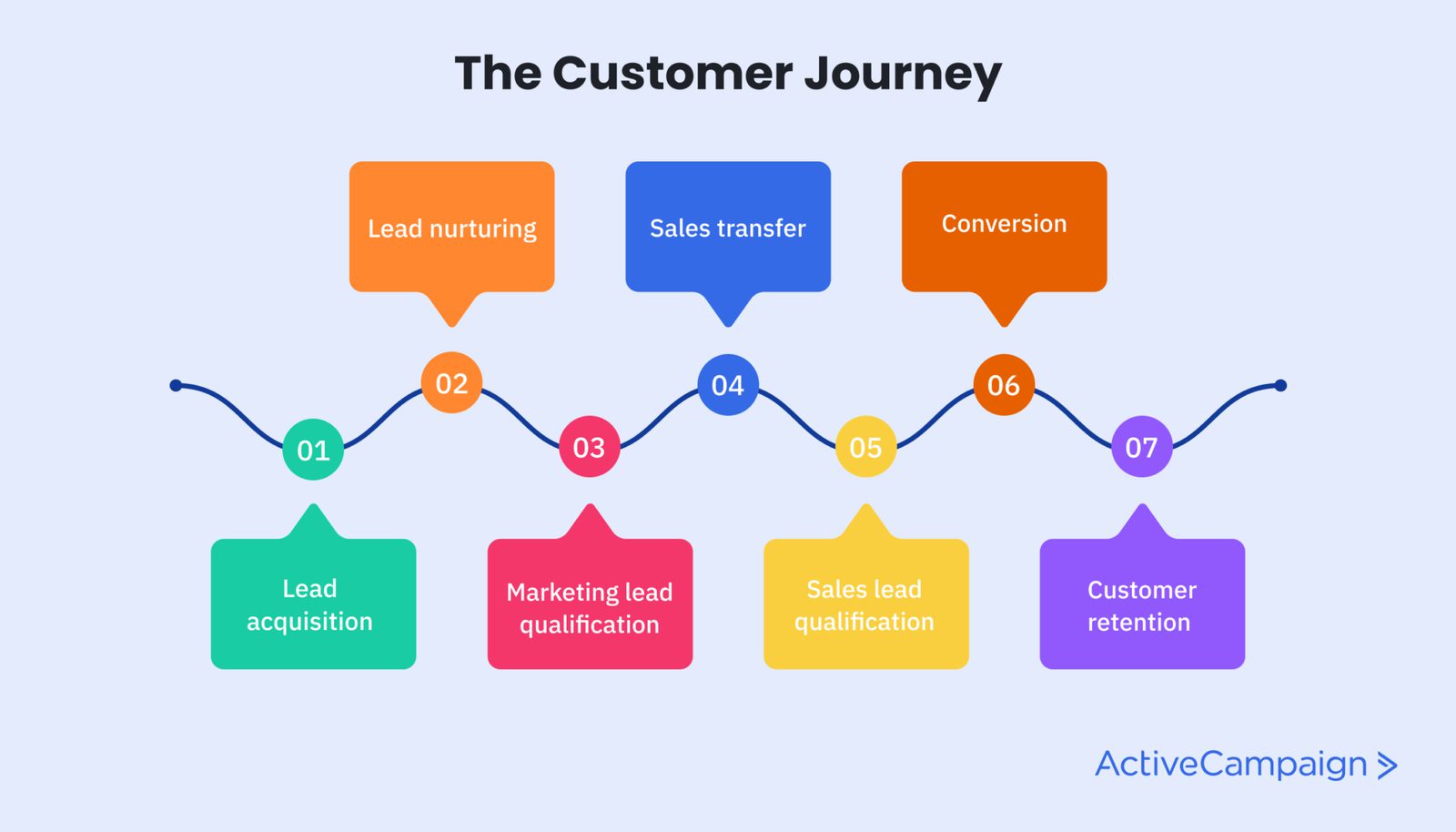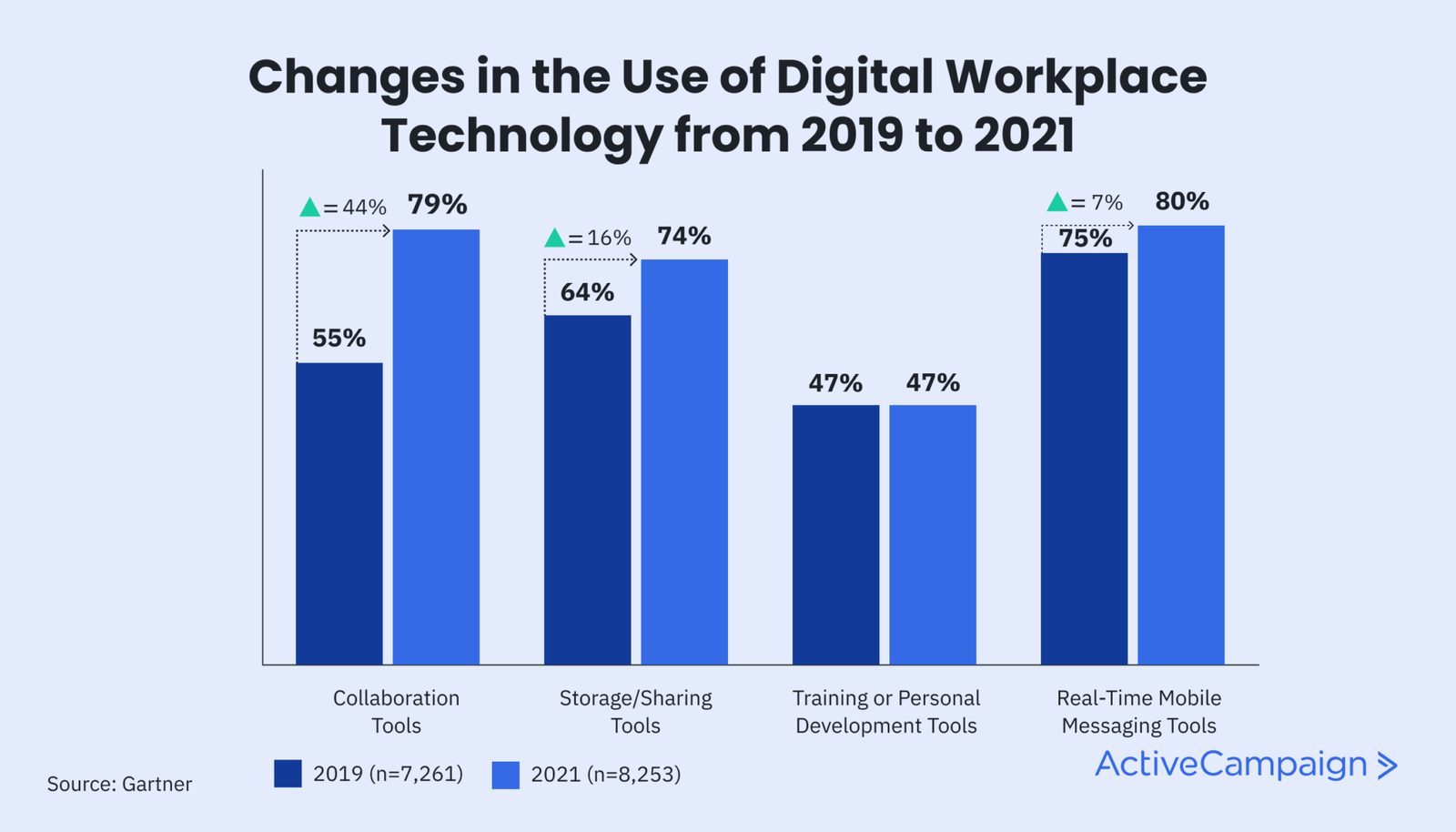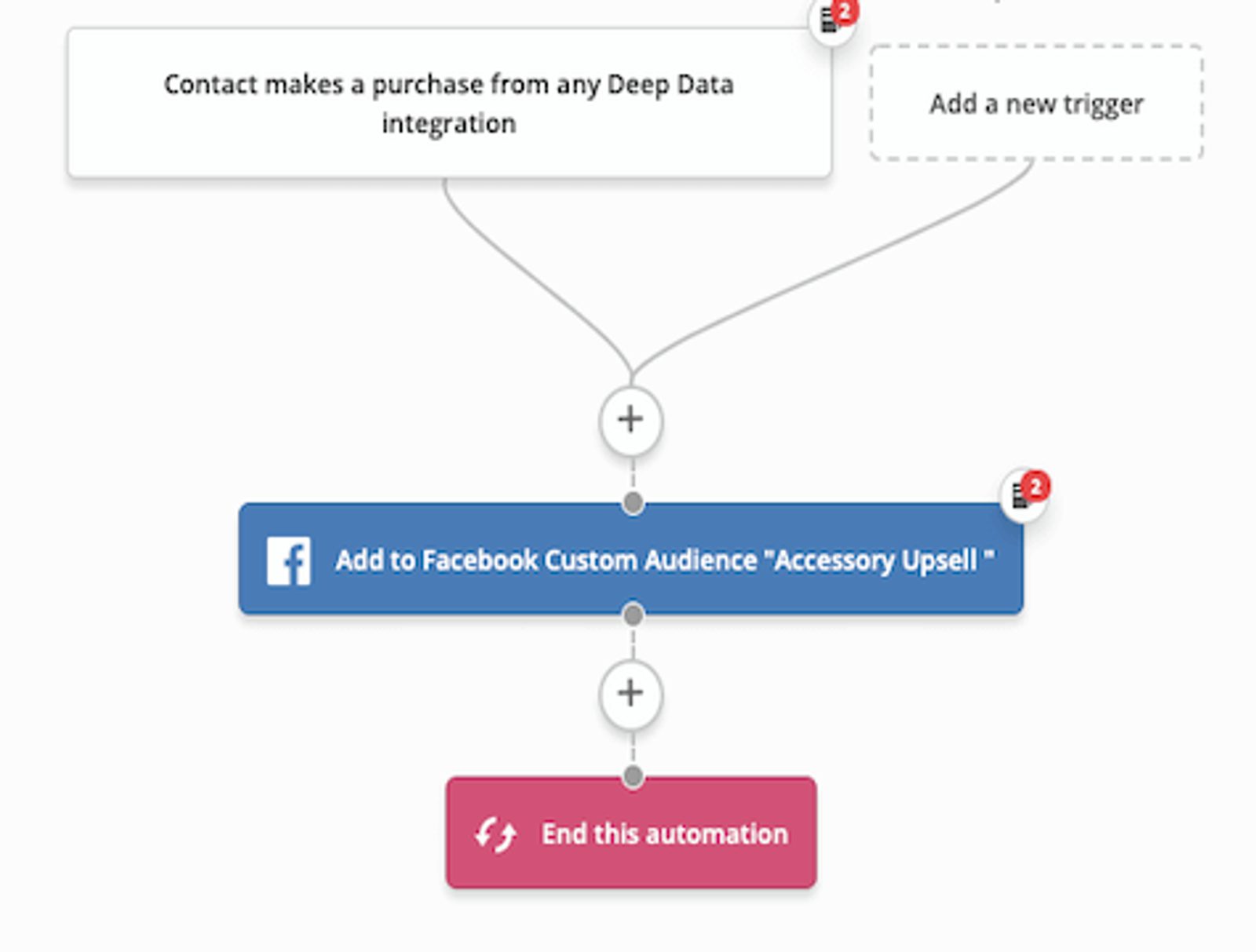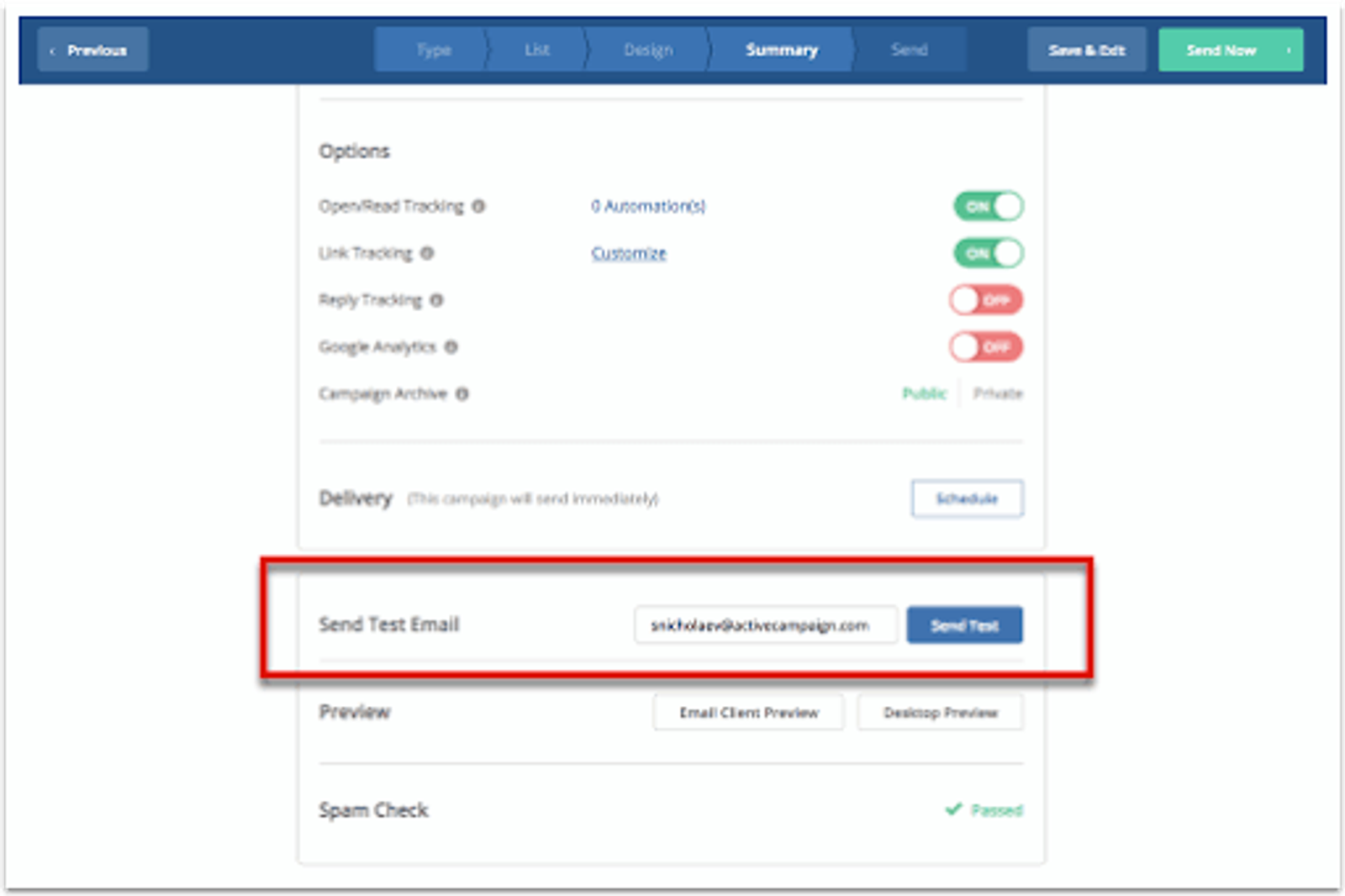Every business wants to master customer relationship management. It helps you understand their behavior, provides them with a better experience, and (hopefully) increases sales.
Unfortunately, it’s not a simple process.
Customer needs change all the time, technology advances, and new competitors hit the scene. With the right CRM platform, you can keep on top of all this information and manage your entire workflow in one location.
This article has seven practical tips to help you create the perfect CRM workflow to increase sales, nurture leads, and grow your business.
Table of Contents
What is a CRM workflow?
A CRM workflow is a series of steps that must happen to complete a task, project, or business process. Each step in the process brings you closer to your desired outcome.

You can use CRM workflows to manage a variety of business processes, such as:
- Email marketing
- Customer support (including customer service emails)
- Sales prospecting
- Invoicing
- Lead management
- The buying process
- Managing the sales funnel
- Managing customer complaints
With a workflow in place, these processes are easier to manage. You can visualize the entire process in one location and keep track of performance in real-time.
Why should you use a CRM to manage your workflow?
A CRM platform tracks and manages customer relationships across different departments. From marketing and sales to customer service and product design, you can streamline processes across your business.
With a CRM, employees get access to a real-time workflow. They can organize day-to-day tasks, track progress, and monitor results in one system. A sales manager can also use the platform to review sales and make informed decisions about how the sales team can reach their goals.
Let’s take a look at some of the benefits in more detail.
Automate tasks
Using a CRM, you can automate parts of your sales, marketing, and business processes.
Automation (sometimes known as a workflow rule) is an activity triggered by customer action. For example, when a customer buys something from your website, the automation will instantly send them a confirmation email.
Or let’s say a customer uses their email address to sign up for your newsletter. By joining your email list, it triggers an action in your CRM to automatically sends a series of welcome emails to the customer, followed by a series of follow-up emails.

Instead of doing the manual task of sending each email yourself, you can use an automated email workflow to speed up the process. It saves you time and allows you to focus your attention on other tasks. You can also use smart triggers to edit custom fields or the status of leads on your list.
It also allows you to allocate resources better. Research shows that by 2024, operational costs will lower by 30% due in part to automation technology and redesigned operational processes.
Why?
Because with automation, you spend less time and money on repetitive and mundane tasks. As a result, you can allocate these resources elsewhere.
Monitor the customer journey
A CRM platform allows you to keep a close eye on the customer journey from initial contact to conversion. You can see every new lead, sales agent call, purchase, support query, and customer complaint in real-time.
This insight gives you a better understanding of how your customers move through the sales funnel. You can track every step of the workflow to see what’s going well and what can be improved. As a result, you tailor the customer journey to the needs and expectations of your potential customers.
For example, let’s say most customers abandon their cart before making a purchase. With this information, you can review the buying process and make it easier for customers to buy from you, reducing cart abandonment rates. Your customers get a better experience, and you’re more likely to get a sale. It’s a win-win.
Access to customer data
Over 50% of businesses say they lack the data they need to better understand their customers.

Using a CRM platform can solve this problem.
With the right CRM, you’ll have access to various reporting and analytics about sales, performance, and customer behavior. This information allows you to better understand your customers and the market in general.
Seven tips for creating a successful CRM workflow
There’s no one-size-fits-all when it comes to creating a successful CRM workflow. Every business is different, and so every workflow is unique.
However, you can follow some best practices to increase your chances of creating a successful CRM workflow. We’ve outlined seven tips to give you a solid foundation.
1. Choose the right CRM
If you don’t have the right CRM platform for your business, efficiency and productivity can take a hit. To find a workflow management solution that’s right for your business, ask yourself the following questions:
- What features do I need? Are there any particular features you might need to create the perfect workflow? Do you need to integrate external platforms? Or run a background workflow alongside your real-time workflows? Think about this before you start searching for a CRM. This will help you narrow down the right workflow management tools and make your search more efficient.
- How easy is it to use? If your CRM is difficult to use, it could hinder productivity. And if it requires hours of training to get started, it’ll take you a while to get things off the ground.
- Is it flexible? Can the platform be customized and tweaked? This will help you create the perfect workflow.
- Is a “vertical-specific” CRM a good choice? Some companies offer custom-made CRMs for specific industries, but they don’t always live up to expectations in terms of usability and features.
Once you’ve found some platforms that fit the bill, sign up for a free trial to see which interface works best for your business.
2. Enable collaboration
Collaboration is crucial in any business, so it’s no surprise that the use of collaboration tools has increased by 44% over the last couple of years.

When creating your CRM workflows, take collaboration into account. You’ll need to work with colleagues and stakeholders at some point, so you need to be able to work with them effectively.
To make sure you can collaborate with your team, choose a CRM platform that does the following:
- Streamlines internal collaboration. Use a CRM platform with all the features you need to facilitate cross-functional collaboration internally. For example, using a platform that allows users to add comments, tag other users, and share updates.
- Allows you to share information externally. Being able to share information externally will help you collaborate with stakeholders outside the company. This might be downloading records, sharing reports, or giving guests access to the platform.
- Works for distributed teams. If you’re part of a remote marketing team, you’ll need a CRM platform that’s easy for everyone to access — no matter where they are. For most businesses, this means using SaaS (online) software.
3. Use workflow automation (or ‘workflow rules’)
Whether you have a single workflow or multiple complex workflows, automation will make it more efficient. It allows you to streamline your processes, reduce time spent on redundant tasks, and provide consistency in workflows across the business.
Workflow automation can apply to various business workflows. From email marketing to lead generation, automation can improve processes across your entire business. Take a look at these automation workflow examples for inspiration.
Here’s an example of an automation for Facebook’s Custom Audiences.

To effectively use automation in your workflows, start by identifying where you need automation in the first place. Review your processes and look for areas of improvement.
Do you have a lot of bottlenecks? Are you spending a lot of time on one particular area of the workflow? Finding these pain points will help you find where to use workflow automation tools.
4. Integrate with third-party tools (if you need to)
There’s a reason IT teams spend over a third of their time on integration projects. Integrating your CRM with third-party applications can make your workflow more efficient.
Take a look at the Tampa School of Real Estate as an example. By integrating email marketing with their CRM, they saw a 5x monthly sales increase and a 50% annual increase in revenue.
But despite the benefits of integration, only 29% of applications are integrated.

To give your CRM workflow the best chance of success, use a platform that enables pain-free integration with as many of your existing tools as possible. Even if you don’t need integration right now, you might in the future.
5. Plan for growth
If things go well and your business grows, your workflow needs to keep up — that’s why you need to create scalable processes and operations. Manual workflows that work for a small business will no longer cut it as you grow.
You’ll be better equipped to handle the increased volume with scalable processes. Your processes will remain efficient while still delivering the results you expect.
Here’s some advice for creating scalable processes within your workflow:
- Fully understand your current processes. To successfully scale your processes, you first need to know the ins and outs of how they operate. Spend some time reviewing and mapping the steps of your workflow so you have a firm grasp on how to get from start to finish.
- Identify success gaps. Where can the process be improved? Could it be quicker or less costly? Identifying these gaps as soon as possible helps you create a scalable process in the long run.
- Automate processes as much as possible. Using automation will take some of the weight off your sales team when things get busier.
6. Test your workflow
Testing your workflow will help you identify any hurdles or challenges. It gives you a chance to put things right before you go live.
Here are some ways you can test your workflow:
- Develop test cases. Start by creating a use case to put your workflow to the test. The use case will depend on what your workflow is for. From internal projects to customer experience, you’ll select a use case relevant to your workflow.
- Get users to test the workflow. Ask a few people to test the workflow as if they were using it in real-time. The more people that can test it, the better it will be.
- Compare the results. When everyone has tested the workflow, review their feedback. This is where you’ll identify what works well and what needs improvement.
- Make any improvements. Implement changes to the workflow before rolling it out.
If you use ActiveCampaign as your sales CRM, you can test your automation and email campaigns before they go live.

You can make any amends with this feature before launching your automations or sending customer emails.
7. Continually track progress
Business landscapes change constantly. To make sure your workflows keep up with any changes in the marketplace, you need to track their performance and monitor progress.
Here’s how you can track the performance of your workflow:
- Set goals and milestones. Goals and milestones are great markers of success. They’ll show you how your workflow is performing to see if your CRM workflow is doing its job as efficiently as possible.
- Identify bottlenecks. Identifying bottlenecks will help you streamline your workflow and keep tasks moving along smoothly. To find bottlenecks, take a look at your workflow in real-time and see if any hold-ups crop up regularly. If there are, you can take action to put them right.
- Check-in with your team. Your team will be using your CRM software daily. Check-in with them to see how it’s working for them and if they have any queries or suggestions for improvement.
Use ActiveCampaign to streamline your workflow
A CRM workflow is how you structure your business processes to go from prospect to sales qualified lead to purchase. But creating the perfect CRM workflow is different for everyone.
Why?
Because every business is different.
In this article, we’ve outlined seven practical ways you can create a solid CRM workflow. But ultimately, it’s up to you to figure out what your business needs. Only then can you create a successful CRM workflow.
Once you’ve figured out what your business needs, take a look at ActiveCampaign’s CRM and marketing automation. Our workflow tools can help you streamline your entire workflow and provide your customers with a better experience.
Sign up for a demo or free trial to see what you think.








